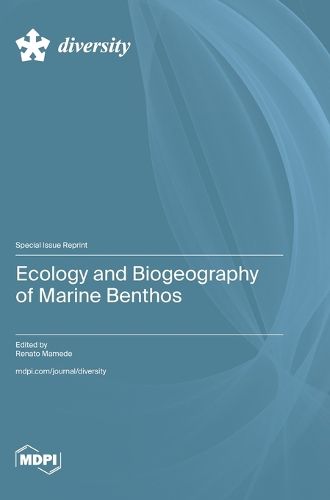Readings Newsletter
Become a Readings Member to make your shopping experience even easier.
Sign in or sign up for free!
You’re not far away from qualifying for FREE standard shipping within Australia
You’ve qualified for FREE standard shipping within Australia
The cart is loading…






This title is printed to order. This book may have been self-published. If so, we cannot guarantee the quality of the content. In the main most books will have gone through the editing process however some may not. We therefore suggest that you be aware of this before ordering this book. If in doubt check either the author or publisher’s details as we are unable to accept any returns unless they are faulty. Please contact us if you have any questions.
The seafloor, which covers 71% of the Earth's surface, contains diverse habitats (from shallow coastal areas to the deepest ocean trenches) and is essential for ecosystem services (such as pollution regulation, food supply, and biodiversity conservation). However, despite its crucial role, only about a quarter of the seafloor has been mapped. This Special Issue aligns with global initiatives such as the UN Decade of Ocean Science and SDG 14 ("Life Below Water") by deepening our understanding of marine ecosystems. It combines traditional and modern methods and aims to integrate research from a wide range of habitats, climates, and regions. The studies presented have primarily examined macrofauna at the community and species level, with an additional focus on megafauna, foraminifera, and macroalgae. These studies integrated conventional techniques and remote sensing for data collection, as well as taxonomic, molecular, and biogeochemical analyses in the laboratory. By applying diverse metrics to assess biodiversity and physiological conditions, coupled with advanced statistical tools, these studies have successfully explored previously unexplored areas, identified invasive species, monitored pollution, and tested innovative substrates to enhance monitoring capabilities. Overall, this SI significantly enriches our understanding of marine benthic ecology and biogeography and provides critical insights that support the conservation and management of marine benthic ecosystems.
$9.00 standard shipping within Australia
FREE standard shipping within Australia for orders over $100.00
Express & International shipping calculated at checkout
This title is printed to order. This book may have been self-published. If so, we cannot guarantee the quality of the content. In the main most books will have gone through the editing process however some may not. We therefore suggest that you be aware of this before ordering this book. If in doubt check either the author or publisher’s details as we are unable to accept any returns unless they are faulty. Please contact us if you have any questions.
The seafloor, which covers 71% of the Earth's surface, contains diverse habitats (from shallow coastal areas to the deepest ocean trenches) and is essential for ecosystem services (such as pollution regulation, food supply, and biodiversity conservation). However, despite its crucial role, only about a quarter of the seafloor has been mapped. This Special Issue aligns with global initiatives such as the UN Decade of Ocean Science and SDG 14 ("Life Below Water") by deepening our understanding of marine ecosystems. It combines traditional and modern methods and aims to integrate research from a wide range of habitats, climates, and regions. The studies presented have primarily examined macrofauna at the community and species level, with an additional focus on megafauna, foraminifera, and macroalgae. These studies integrated conventional techniques and remote sensing for data collection, as well as taxonomic, molecular, and biogeochemical analyses in the laboratory. By applying diverse metrics to assess biodiversity and physiological conditions, coupled with advanced statistical tools, these studies have successfully explored previously unexplored areas, identified invasive species, monitored pollution, and tested innovative substrates to enhance monitoring capabilities. Overall, this SI significantly enriches our understanding of marine benthic ecology and biogeography and provides critical insights that support the conservation and management of marine benthic ecosystems.